Dangerous Work On Mt. Everest
Air Date: Week of April 25, 2014
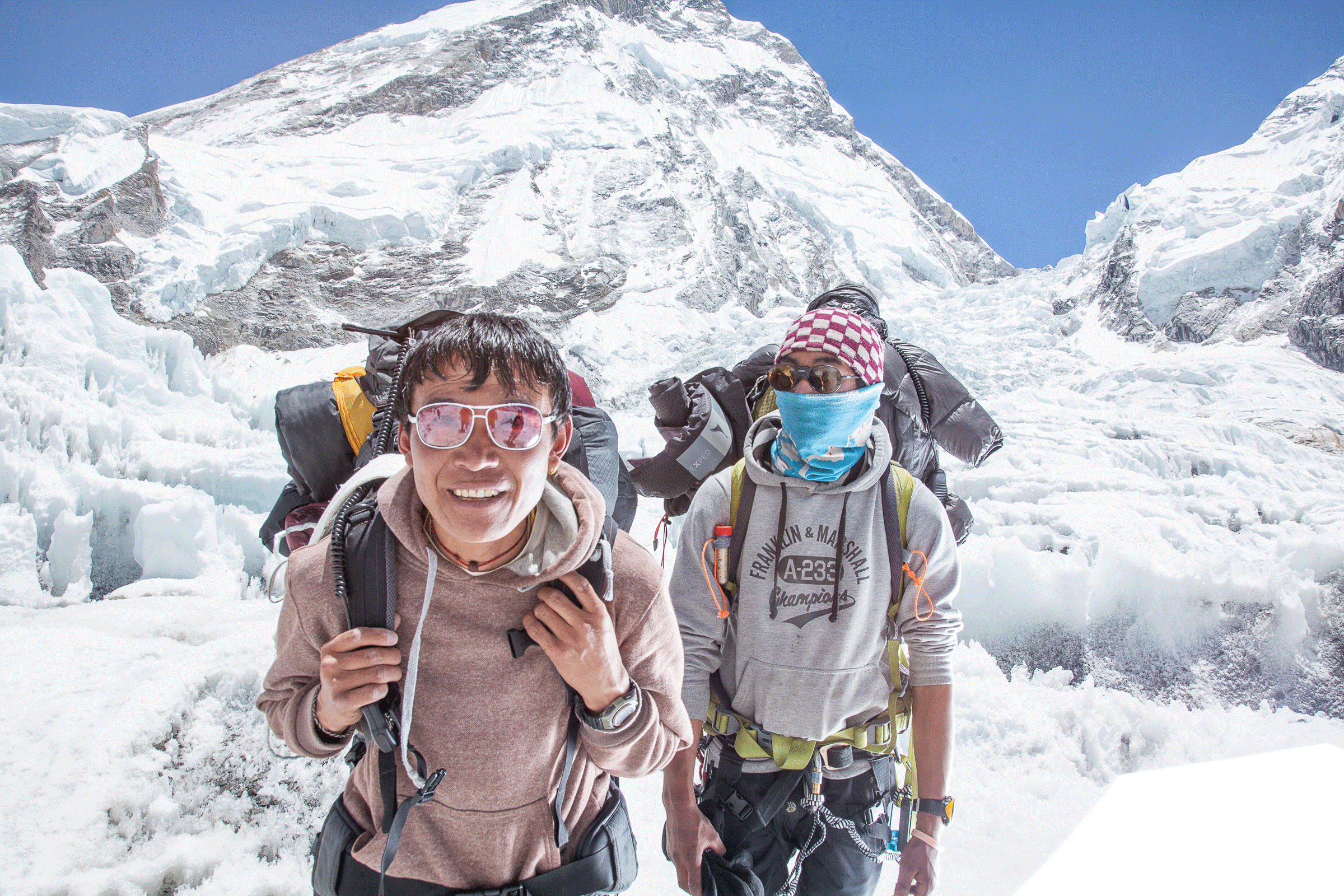
Sherpa Mountaineers on the Roof of the World (Photo: Grayson Schaffer/ Outside Magazine)
Western climbers rely on local Sherpa mountaineering experts to summit Mount Everest, but a recent deadly avalanche swept away 16 of them and the accident threatens the lucrative climbing season. Grayson Schaffer, senior editor at Outside Magazine, tells host Steve Curwood that many are questioning the ethics of subjecting Sherpas to such peril simply for the thrill of reaching the top of the world’s highest mountain.
Transcript
CURWOOD: From the Jennifer and Ted Stanley Studios in Boston and PRI, this is Living on Earth. I’m Steve Curwood. To scale the highest mountain in the world was once only possible for the most skilled and brave climbers, but today just about any fit person with enough money can summit Mount Everest. Those ascents wouldn't be possible without help from the Sherpas, native to the mountains, but a recent deadly accident that swept away 16 of them may disrupt the entire climbing season for 2014. As we record this, some two-thirds of the Sherpas are refusing to climb what is becoming an increasingly dangerous peak as a warming world speeds the melting of glaciers. We're joined now from Kathmandu, Nepal, by Grayson Schaffer, Senior Editor and Staff Writer for Outside Magazine. Welcome to LOE.
SCHAFFER: Thanks for having me, Steve.
CURWOOD: Tell me about some of the Sherpas you’ve met in Nepal. What’s their job?
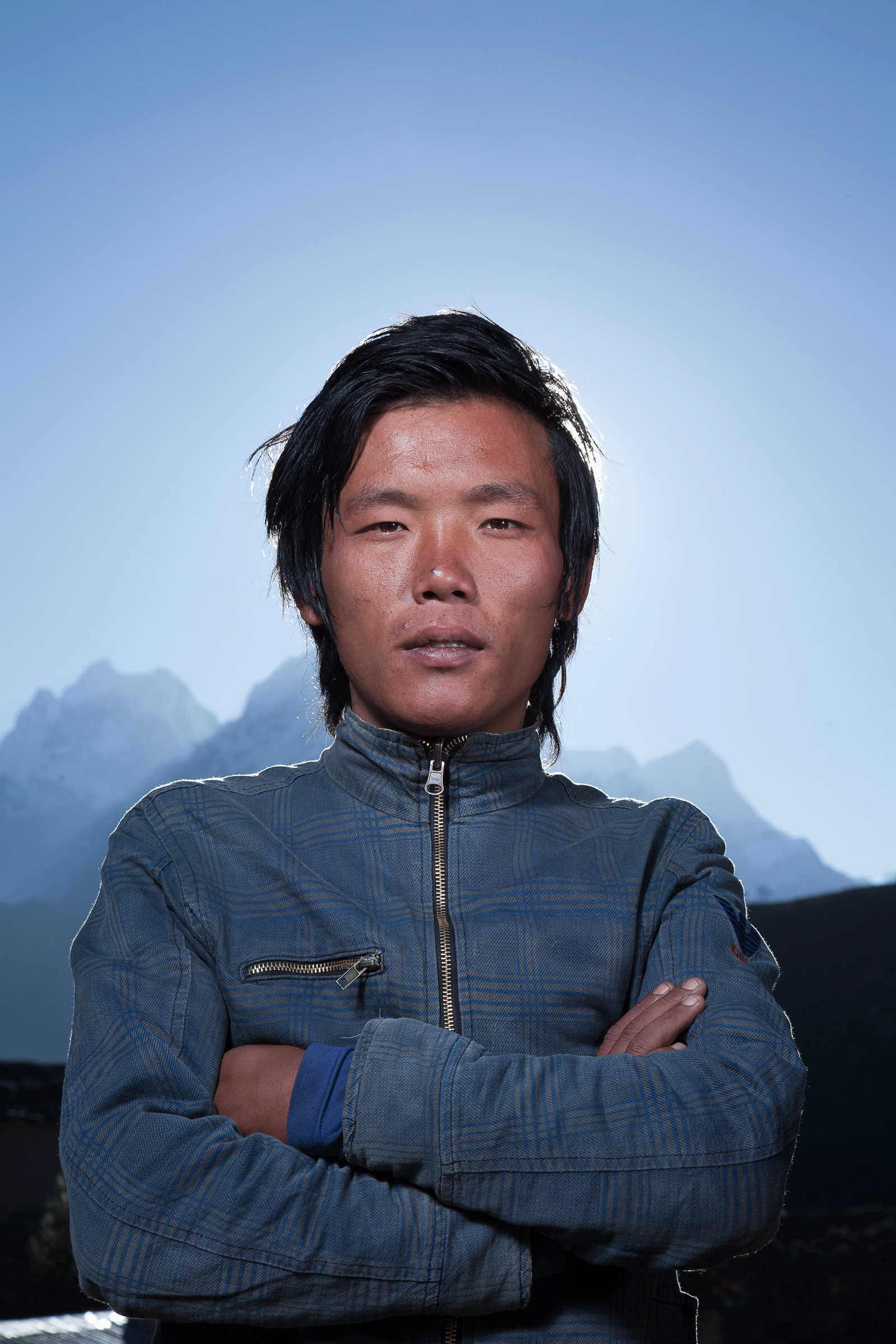
(Grayson Schaffer/ Outside Magazine)
SCHAFFER: Well, the job is extremely physical. All of the guys that do this are wiry and incredibly strong. They need to be able to carry an 80-pound backpack up through the Khumbu icefall which is near 2,000 vertical feet starting at 17,600 feet going through about 19,500 feet, and they do up to 10 or 20 laps through this thing each season. It’s incredibly dangerous work, very physical, and they basically have to have a lot of fortitude to be able to do that many laps and keep going day after day.
There have been a couple of studies that have shown that there definitely is a genetic propensity for Sherpas to be able to use what available oxygen there is near the summit of Everest much more efficiently that what westerners are able to use. For the most part, these guys are in a league of their own. They’re basically able to do a lot more work than most westerners at any given altitude.
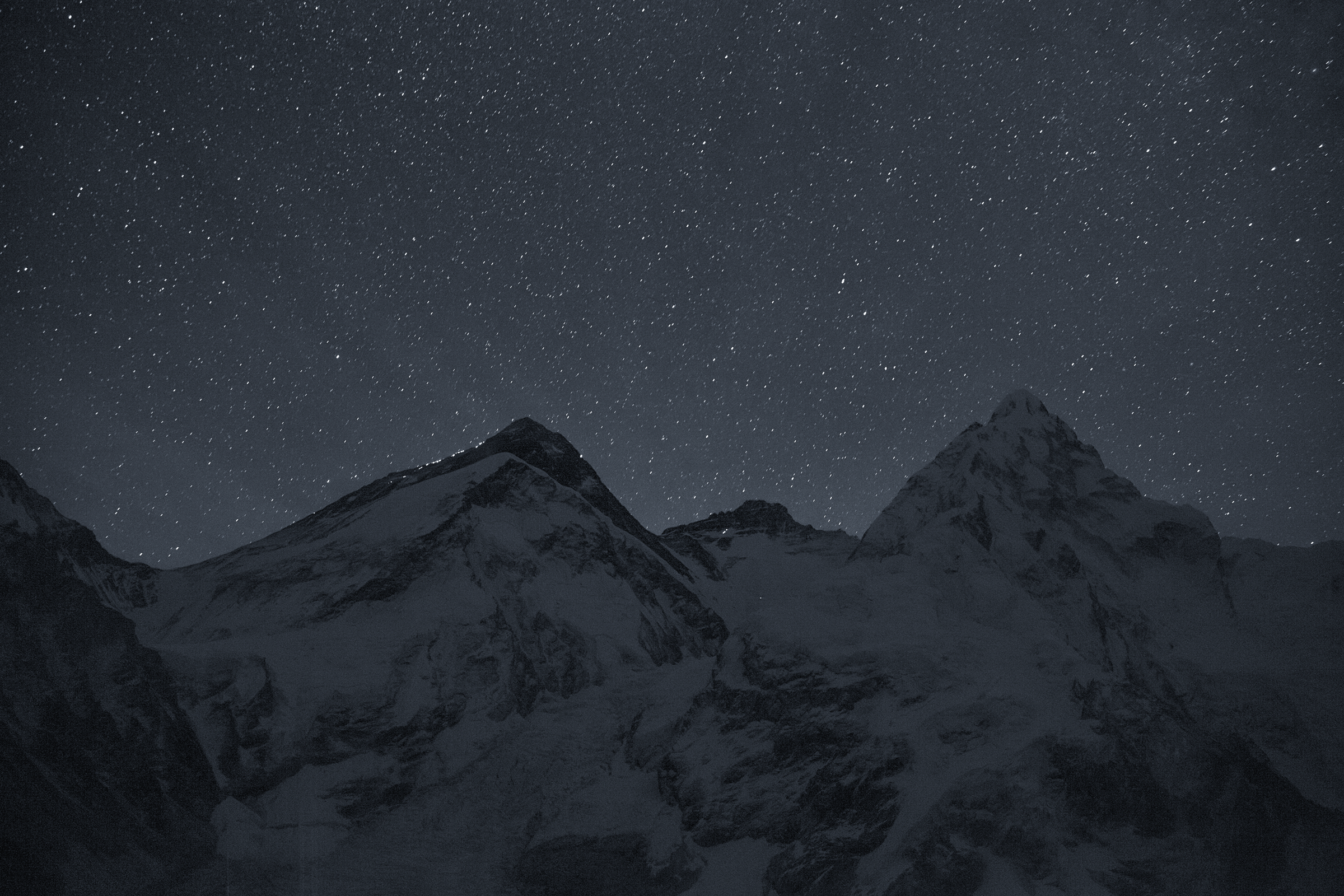
(Grayson Schaffer/ Outside Magazine)
CURWOOD: Now, Grayson, I understand you’ve been up at least a good ways up Mount Everest in that territory. Tell me what it’s like up there.
SCHAFFER: Well, I’ve been well into the Khumbu icefall, and it’s this eerie sort of place where these guys were killed where it seems very quiet, but there’s this sort of low background rumble where you can hear this sort of clicking and popping and things are constantly shifting underneath you, and the Khumbu icefall is this sort of hanging glacier, essentially this sort of river of ice that’s tumbling down the side of the mountain, and so it’s actually moving constantly, and you have these huge teetering blocks, you know, apartment-sized blocks of ice that are constantly shifting, and above it all you have the west shoulder of Everest on one side, and Nuptse, which is a 7,000-meter peak on the other side which are also sheets of ice and are constantly sending avalanches down on the route. One of the other problems that you get with warming temperatures is that the ice melts out to rock. Typically, the rocks and cobbles and boulders are sort of cemented into the mountain, and when it gets really warm, like we saw in 2012, these rocks will melt out and start tumbling down like missiles. And I heard a number of reports from people who would hear suitcase-sized boulders whistling by them. There were a number of Sherpas who were hit and injured, and some even critically injured by rockfall that was due to melting ice.
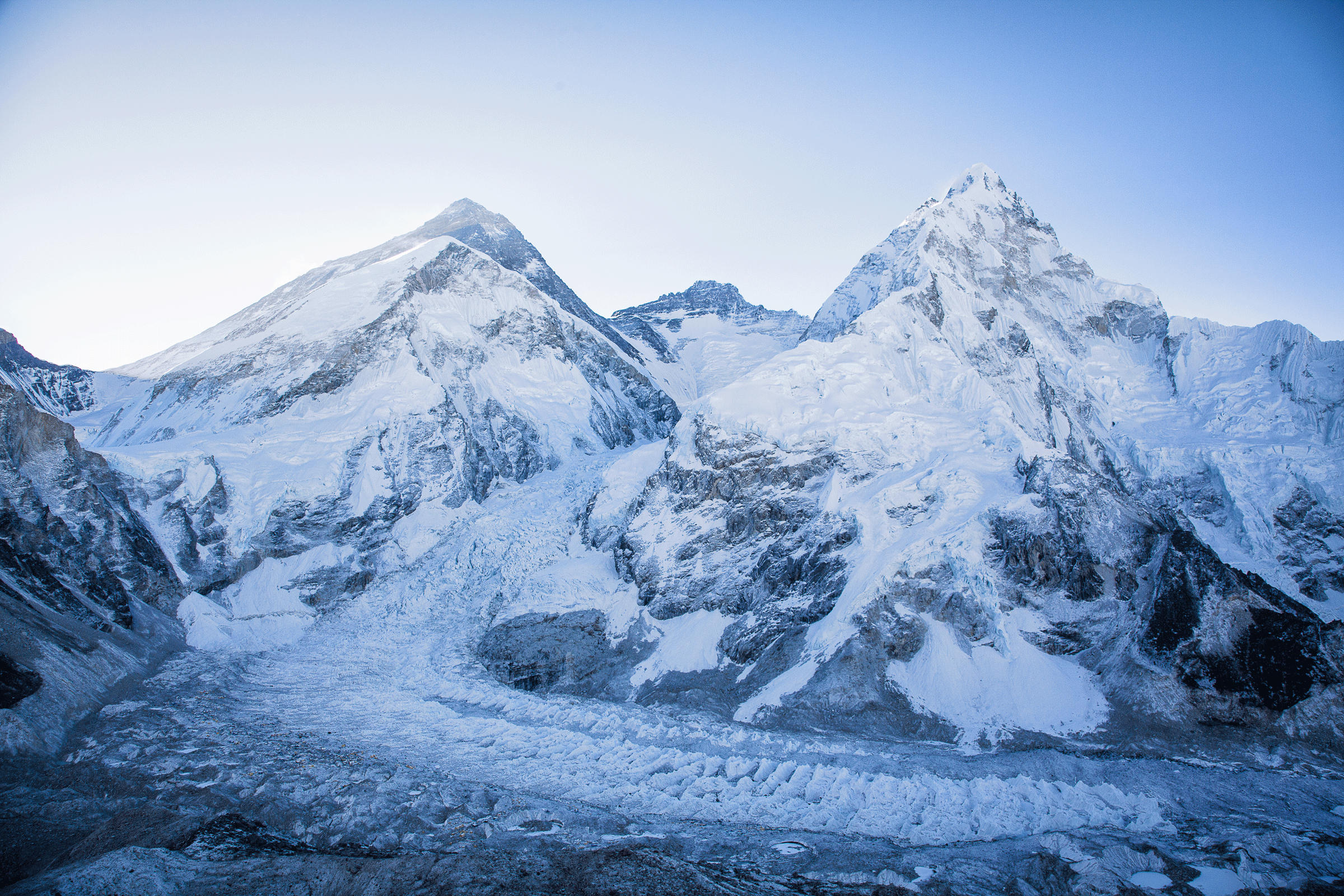
(Grayson Schaffer/ Outside Magazine)
CURWOOD: It’s obviously dangerous work. How dangerous is it relative to other dangerous occupations?
SCHAFFER: We know that one percent of people who leave base camp and head for the summit are probably not going to come back. And even though the Sherpas are probably more capable, more genetically advantaged to climbing, the fact that they’re spending so much time in the shooting gallery there, it exposes them to much greater risk. If you look at something like an actuarial table and you compare the chance of dying working as a Sherpa, it ends up being more dangerous than working as an Alaskan bush pilot, more dangerous than being a commercial fisherman like on The Deadliest Catch and probably even more dangerous than being a soldier in the US military. It’s really among the most dangerous occupations I think you can have.
CURWOOD: And it’s not just death by avalanche that puts them in peril. I was surprised to read in your articles that there are a lot of other health complications associated with the work. Can you tell me about that please?
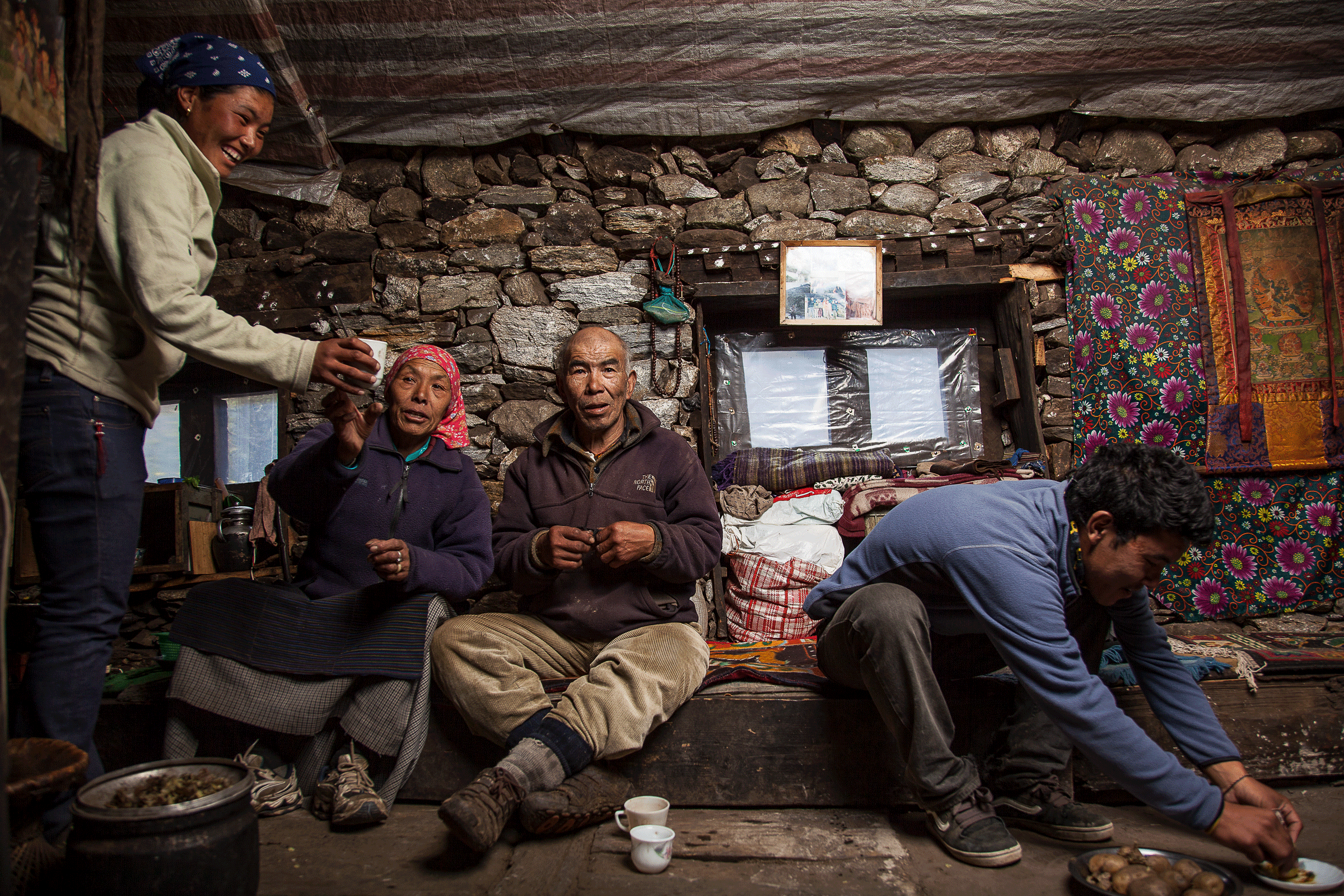
(Grayson Schaffer/ Outside Magazine)
SCHAFFER: Yes, that was one of the things I was really surprised to find that when I went looking in 2012, when I went in the fall trying to meet people who had lost their primary wage earners in the mountains, that I found not only a number of widows and children who had lost their fathers, but also a number of disabled men who had suffered a stroke. I think the medical evidence is still inconclusive on whether there’s actually a link between stroke and high altitude but certainly, anecdotally, it seems like it happens far more often to young fit men who ordinarily would have low risk for stroke, and in addition to that, you still have this sort of standard high-altitude ailments like high altitude pulmonary edema and cerebral edema, and these are both where your brain and your lungs begin leaking fluid which can become life-threatening extremely quickly if you don’t get down to lower altitude.
CURWOOD: Now, I know hikers can spend a lot of money to summit Mt. Everest. How much of that goes to the Sherpas that make it possible?
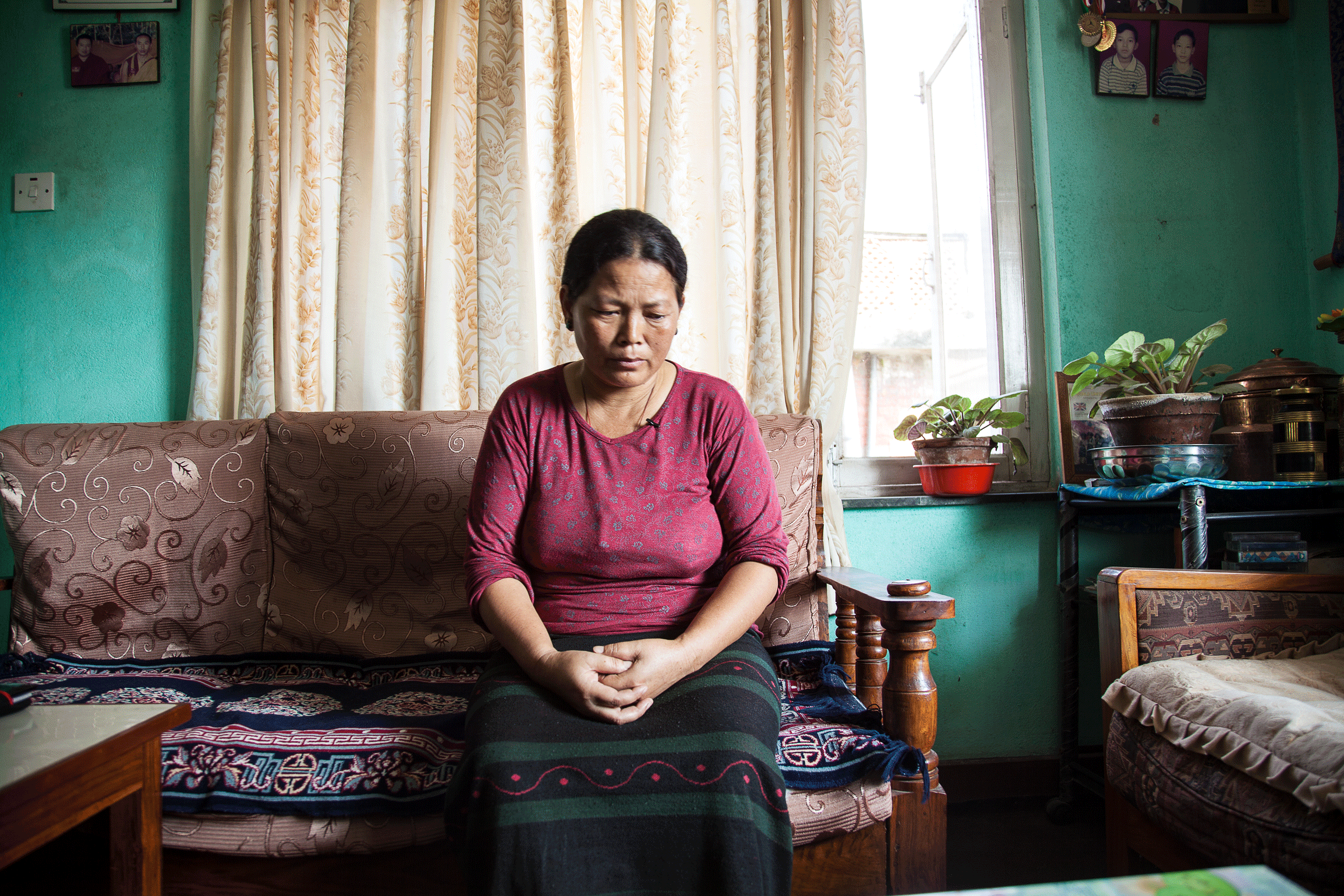
(Grayson Schaffer/ Outside Magazine)
SCHAFFER: The way that the sort of economy of Everest breaks down, a permit to climb Everest costs about $10,000 per person. That gets factored into the price that an outfitter charges you, which is typically between about $30,000 and $100,000. The sherpas will typically make between $2,000 and $6,000 per three-month season, which may not seem like a lot of money for somebody from the US, but is, in fact, eight to ten times what the average person in Nepal makes.
CURWOOD: Grayson, some would criticize what’s going on at Everest as being a very expensive theme park. I mean, if you look at the dark side of this, part of the thrill for the thrill-seekers is that, “Hey, I was on that expedition...a couple of people died, but I made it out.”
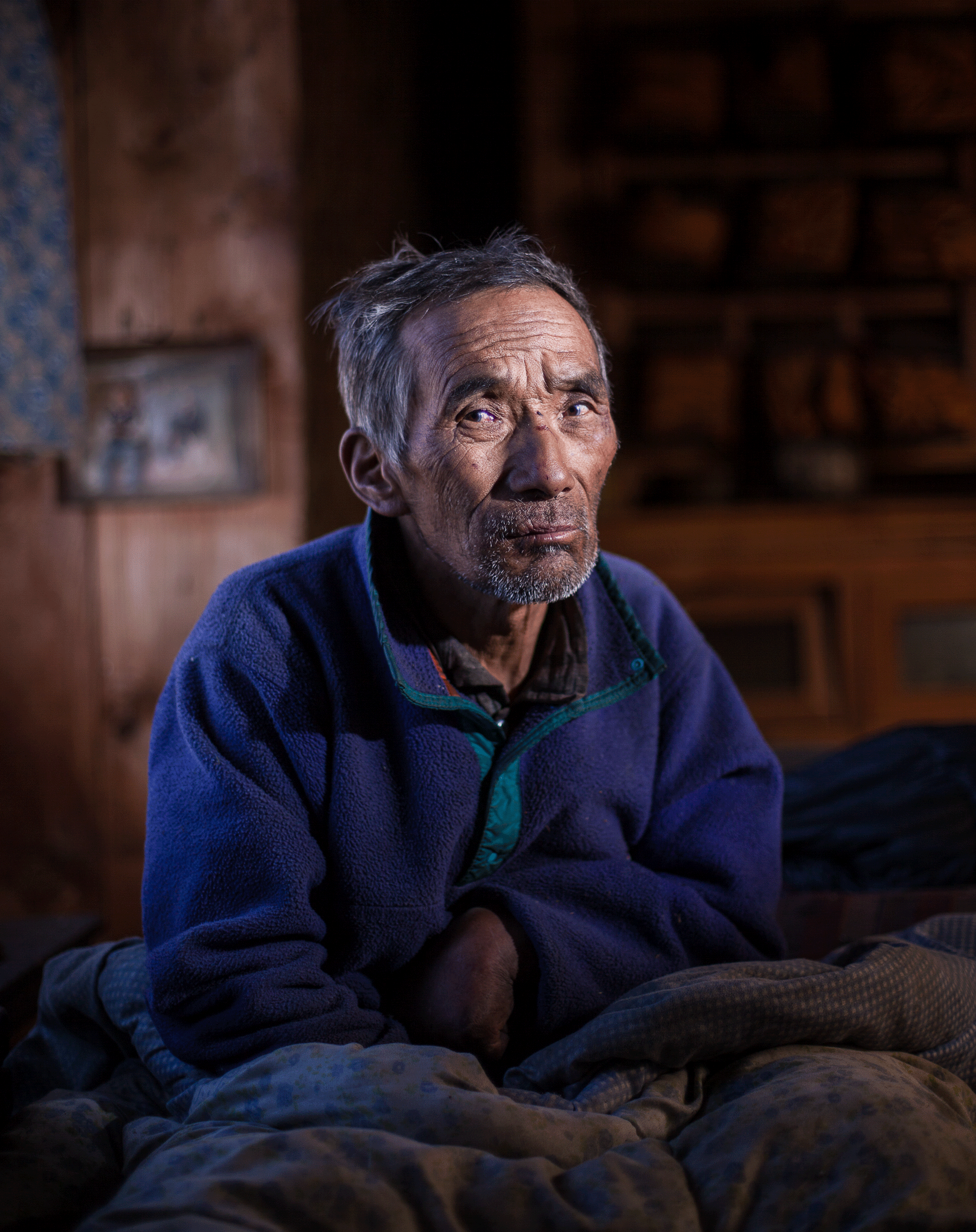
(Grayson Schaffer/ Outside Magazine)
SCHAFFER: Yes, and people ask me this every time one of these things happen. They say, "Now that this tragedy happened do you think fewer people will go?" And I say, "No, just the opposite. Every time there's one of these tragedies, in fact, more people go.” And I think, it’s just what you’re talking about. The danger is part of the allure. I mean if it were safe, why bother?"
CURWOOD: So how ethical is it for westerners to continue extreme hikes like Everest given the danger it presents for the Sherpas?
SCHAFFER: It’s not just something you can explain to others even if you can explain it to yourself, you know, why you’re doing this and why you’re putting these people at risk. Normally, when people do really dangerous jobs, it’s for things that society deems necessary like building bridges and dams and going to fight wars and that sort of thing, not taking people up a mountain so that they can have a look around.
CURWOOD: Grayson Schaffer is Senior Editor and Staff Writer at Outside Magazine. Thanks so much for taking the time with me today.
SCHAFFER: Well, thanks for having me.
Links
Living on Earth wants to hear from you!
Living on Earth
62 Calef Highway, Suite 212
Lee, NH 03861
Telephone: 617-287-4121
E-mail: comments@loe.org
Newsletter [Click here]
Donate to Living on Earth!
Living on Earth is an independent media program and relies entirely on contributions from listeners and institutions supporting public service. Please donate now to preserve an independent environmental voice.
NewsletterLiving on Earth offers a weekly delivery of the show's rundown to your mailbox. Sign up for our newsletter today!
 Sailors For The Sea: Be the change you want to sea.
Sailors For The Sea: Be the change you want to sea.
 The Grantham Foundation for the Protection of the Environment: Committed to protecting and improving the health of the global environment.
The Grantham Foundation for the Protection of the Environment: Committed to protecting and improving the health of the global environment.
 Contribute to Living on Earth and receive, as our gift to you, an archival print of one of Mark Seth Lender's extraordinary wildlife photographs. Follow the link to see Mark's current collection of photographs.
Contribute to Living on Earth and receive, as our gift to you, an archival print of one of Mark Seth Lender's extraordinary wildlife photographs. Follow the link to see Mark's current collection of photographs.
 Buy a signed copy of Mark Seth Lender's book Smeagull the Seagull & support Living on Earth
Buy a signed copy of Mark Seth Lender's book Smeagull the Seagull & support Living on Earth

